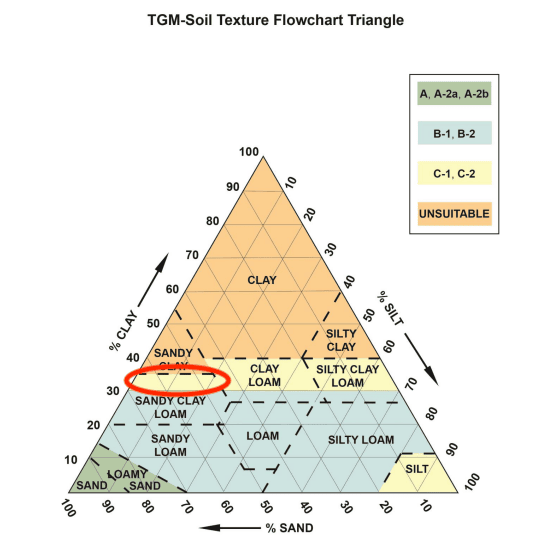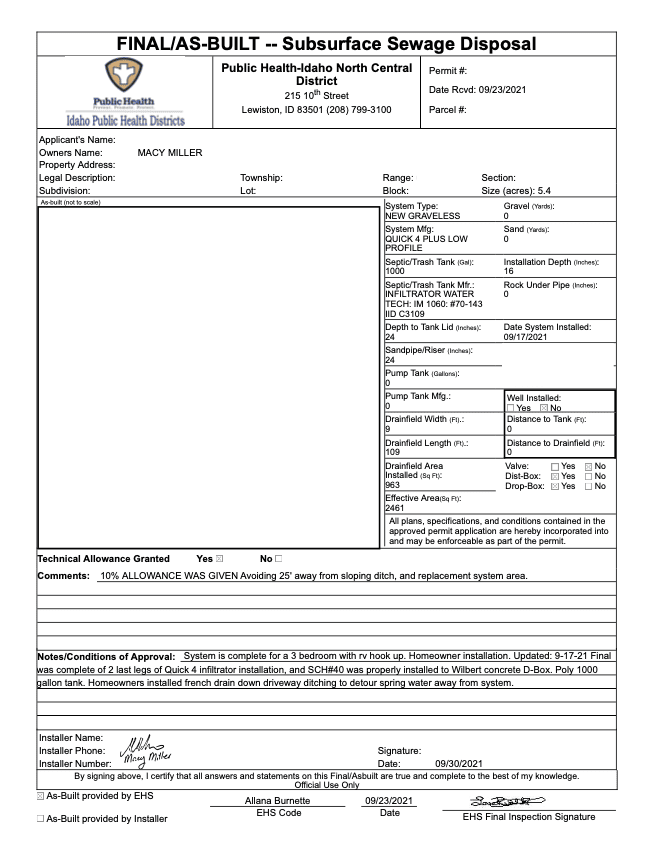Our Septic
Here’s a long overdue update on our septic install. Summer of 2020 we got a notice to not be on our property more than six months of the year. It was a known rule for us that I had no intention of breaking. But, since I got the notice, I decided that was a door opening to start the discussion of how I could get legal status. For that, I had to apply for a Conditional Use Permit (CUP) to allow my tiny house, as an RV, to be lived in year round. I turned in the appropriate paper work, showed up at my hearing and made my case and gained approval – WITH the condition that we put in a septic system.
There are a number of composting toilets (Section 4.4 and table 5.5) permitted in Idaho. My particular unit was not one of them but a lower tier unit by the same manufacturer is. I started a petition with DEQ in order to get my particular unit approved. At the same time though, Idaho reclassified kitchen sink water as black water. In the past it was one of the few states that classified it as grey water. No system is required for grey water, but even if I got my toilet approved I would be required a septic for my kitchen sink. My hope was to convince the powers that be that we could use an alternative path. We are not hooked up to a well and never plan to be, I thought that could be used in my favor. No such luck.
Septic Permit
In October 2020 I applied for the septic permit. We dug some test holes, folks from the health department came out and analyzed our soil. I still don’t quite understand but our soil was about an cruddy as could be permitted. It had too much decomposed granite in it and therefore allowed the water to percolate too fast. We were found to be in the soil type circled below which just barely allowed for a septics’ install. Good news for us as there was literally no other place to put it without being too close to the pond for legal:

With that though, it meant our system was going to be big! Since we plan on building eventually up the hill we went ahead and sized it to be able to handle our future ground bound house as well as the tiny house. The permit was good for a year, starting Oct. 7th 2020.
It took:
- 3 breaks of ‘ole Daisy the tractor (about $380 to fix)
- 78 low profile drain field chambers and 6 end caps ($40/each =~$3,200)
- 1 – 1,000 gallon septic tank ($1,500)
- 1 distribution box with 3 regulator valves (~$200)
- A bunch of 4″ schedule 40 Pipe (~$600)
- 320 feet f gopher wire ($500)
- A new RV toilet ($250)
- A whole bunch of time digging… days and DAYS of digging… 312 foot of level trench + a giant, 16’x10′ hole for the septic.
At the end of September, 2021 we got our final approval and officially checked off all of the requirements that gave us legal approval! The total cost came in just about $5,640. Half of the total cost to build my whole house!

It was a mega accomplishment and we’ve finally just recovered from how draining it was (very punny). Since the completion of that project we have moved back into the barn to work more on the classroom space. In short, we have a 16’x36′ mezzanine space that we are turning into a classroom. Last weekend we finished framing the walls. We’re working on electrical now (it will also be solar powered). I’ll do an update on that shortly, until then, here are some pictures of our septic install process. I am very happy to answer any questions I can for other DIYers!






























